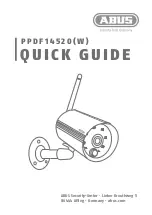
SVS-VISTEK
Glossary of Terms
104
A bright light source with a very short light pulse. Ideal for use with
industrial cameras, e.g. for “freezing” the image capture of fast moving
objects. Can often be a substitute for the electronic shutter of the image
sensor. Certain industrial cameras have dedicated in-camera output drivers
for precisely controlling one or more strobe lights.
CCD sensors can occur divided into two, four or more regions to
double/quadruple the read out time.
TCP/IP provides end-to-end connectivity specifying how data should be
packetized, addressed, transmitted, routed and received at the destination.
The USB3 Vision interface is based on the standard USB 3.0 interface and
uses USB 3.0 ports. Components from different manufacturers will easily
communicate with each other.
Cameras for industrial use usually provide a set of different trigger modes
with which they can be operated.
The most common trigger modes are: (1) Programmable shutter trigger
mode. Each image is captured with a pre-defined shutter time; (2) Pulse-
Width Control trigger. The image capture is initiated by the leading edge of
the trigger pulse and the shutter time is governed by the width of the pulse;
(3) Internal trigger or Free-Running mode. The camera captures images at
the fastest possible frame rate permitted by the readout time.
Extensible Markup Language (XML) is a markup language that defines a set
of rules for encoding documents in a format which is both human-readable
and machine-readable
Strobe light
Tap
TCP/IP
USB3 Vision
Trigger modes
XML Files
Summary of Contents for ECO Series
Page 5: ...SVS VISTEK Safety Messages Contents of Camera Set 5 ...
Page 94: ...SVS VISTEK Dimensions 94 ...
Page 96: ...SVS VISTEK Dimensions 96 ...
Page 97: ...SVS VISTEK Dimensions 97 ...
Page 98: ...SVS VISTEK Dimensions 98 ...

































